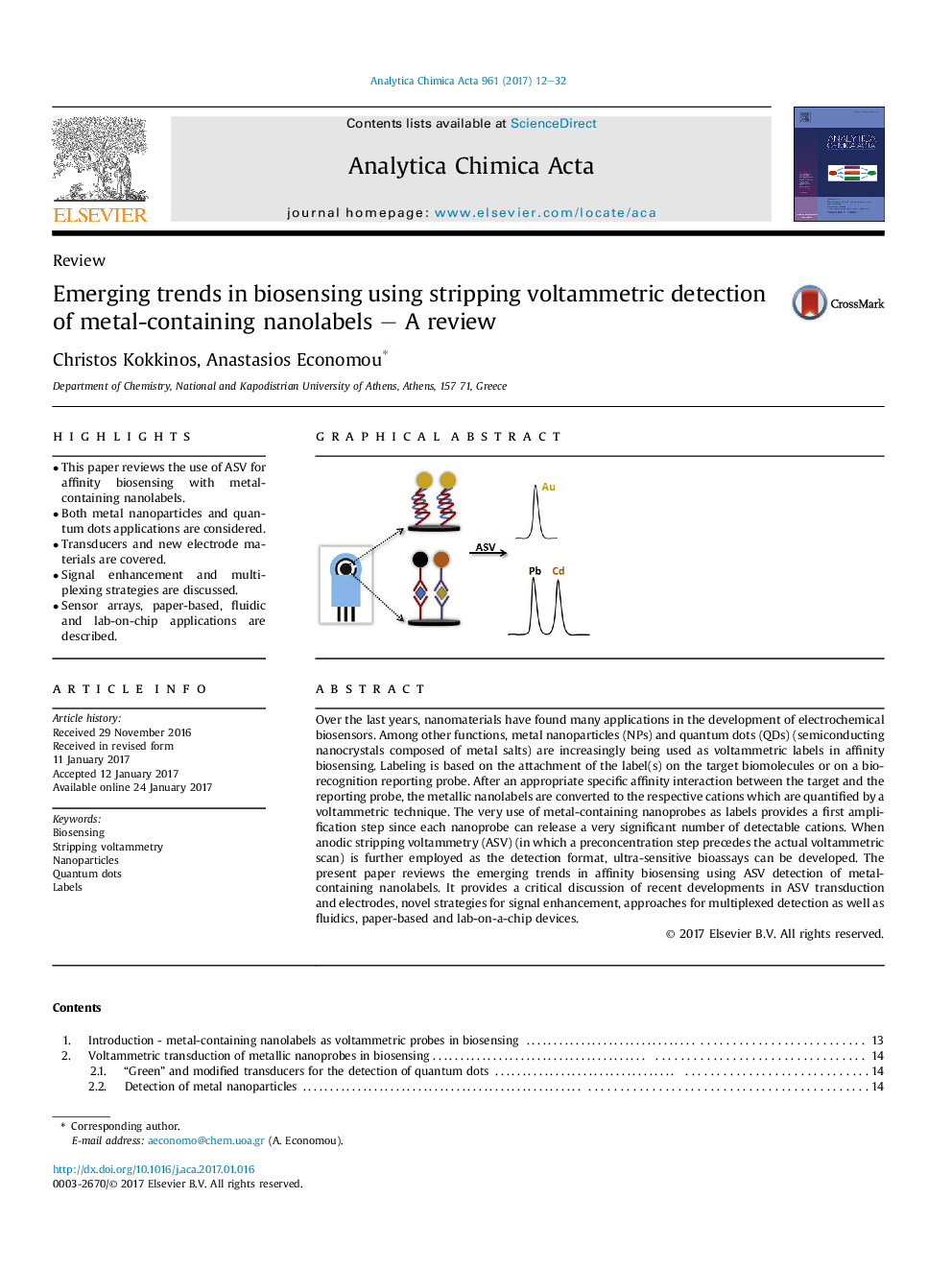| Article ID | Journal | Published Year | Pages | File Type |
|---|---|---|---|---|
| 5130981 | Analytica Chimica Acta | 2017 | 21 Pages |
â¢This paper reviews the use of ASV for affinity biosensing with metal-containing nanolabels.â¢Both metal nanoparticles and quantum dots applications are considered.â¢Transducers and new electrode materials are covered.â¢Signal enhancement and multiplexing strategies are discussed.â¢Sensor arrays, paper-based, fluidic and lab-on-chip applications are described.
Over the last years, nanomaterials have found many applications in the development of electrochemical biosensors. Among other functions, metal nanoparticles (NPs) and quantum dots (QDs) (semiconducting nanocrystals composed of metal salts) are increasingly being used as voltammetric labels in affinity biosensing. Labeling is based on the attachment of the label(s) on the target biomolecules or on a biorecognition reporting probe. After an appropriate specific affinity interaction between the target and the reporting probe, the metallic nanolabels are converted to the respective cations which are quantified by a voltammetric technique. The very use of metal-containing nanoprobes as labels provides a first amplification step since each nanoprobe can release a very significant number of detectable cations. When anodic stripping voltammetry (ASV) (in which a preconcentration step precedes the actual voltammetric scan) is further employed as the detection format, ultra-sensitive bioassays can be developed. The present paper reviews the emerging trends in affinity biosensing using ASV detection of metal-containing nanolabels. It provides a critical discussion of recent developments in ASV transduction and electrodes, novel strategies for signal enhancement, approaches for multiplexed detection as well as fluidics, paper-based and lab-on-a-chip devices.
Graphical abstractDownload high-res image (130KB)Download full-size image
